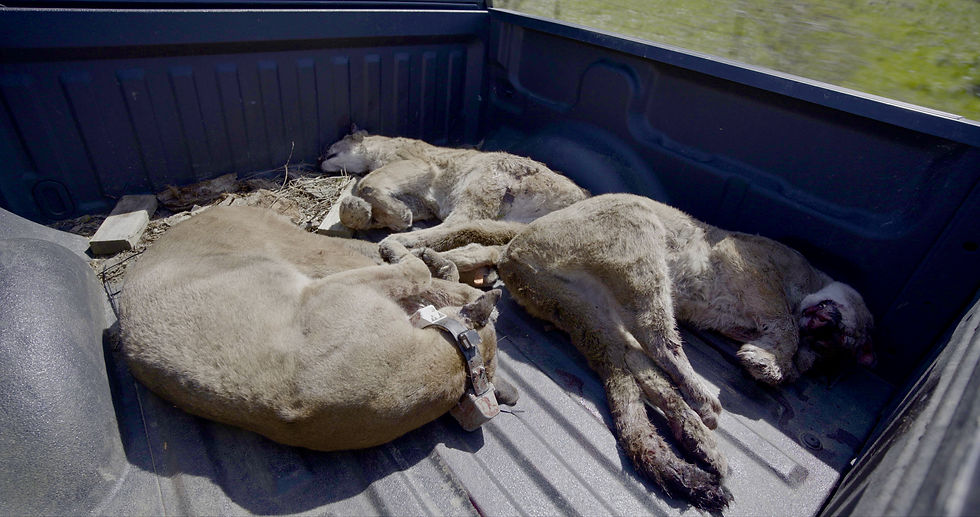
Yoko and kittens
May 9, 2024
When I started this project, I wasn't fully prepared for the high price that mountain lions here would pay just for trying to survive in a landscape dominated by humans. It’s clear that our innate fear of predators, rather than scientific evidence, shapes how we respond to them. This, of course, lies at the heart of our story—changing the way we view mountain lions.
In a span of eight weeks, we lost four cats to Fish and Wildlife authorities. One of them was a young male named Ruckus, who had settled in the densely populated area of Port Townsend. We had been concerned about him for a while, knowing that it was only a matter of time before he ran into trouble. He had killed a couple of sheep and a goat, possibly more. The Olympic Cougar Project (OCP) offered to relocate him, but the conflict team at Fish and Wildlife chose lethal removal instead. It's unfortunate but, sadly, a common outcome around here.
The most heartbreaking incident happened just a few weeks later. Yoko, a female cat we had been following for five years, and her two-year-old kittens were killed by the same Fish and Wildlife team. Yoko lived just a stone's throw from Mark's house in Sequim, and we had even visited her den when her kittens were just three weeks old. Trail camera footage had captured them at play not long ago. Up until that point, Yoko had never harmed any livestock. But when her family stumbled across a llama (not secure in any way) , the resulting conflict led to her family's demise, along with a family Mark had become attached to.
The conflict between wildlife and humans is a tough story to tell. It's a challenging reality here and in much of the western United States. Unfortunately, much of what happens can't be filmed, including the actual predation and the Fish and Wildlife conflict team's response.
However, we were able to film Mark discussing the incident while showing the bodies of the cats. Even though this footage helps, it doesn't fully capture the complexity of the situation. I'm exploring other ways to flesh out the story and make it more engaging.
Post Production
In our film, Mark serves as the bridge between the audience and the story of the cats. At the same time, the film also reflects part of Mark's journey. As we progress through key sequences, we'll continue to balance the focus between natural history and human elements.
I’m not sure how interested you are in the editing process, but I created a video demonstrating how we construct our edits in Adobe Premiere Pro. I originally made it as a teaching guide to illustrate a specific technique we use to structure our film within the timeline. This is the same approach we'll be using to layout this project.
In The Field
In the coming months we will continue to capture events as they unfold. Right now, we're focusing on Monkey, the only surviving offspring of a cat named Zebra (we might need to come up with different names for the final cut).

Monkey's journey is truly remarkable. We have footage of her from when she was just a feisty kitten, and we've followed her all the way through to adulthood. Some of our most intriguing footage shows her and her sister stalking a goat pen, a moment of predatory instinct that ended tragically—her sister was shot by a landowner, leaving Monkey as the sole survivor.
But the story doesn't end there. Monkey now has her own family, and her kittens are about five weeks old. We’re eager to document this new chapter in her life and follow her as she navigates motherhood and tries to keep her family safe.

Besides tracking the cats, we have a lot of supplementary footage to capture, including time-lapse shots of ferns, mushrooms, and flowers. This type of material will help illustrate the changing seasons and provide a richer view of the ecosystem these cats inhabit.